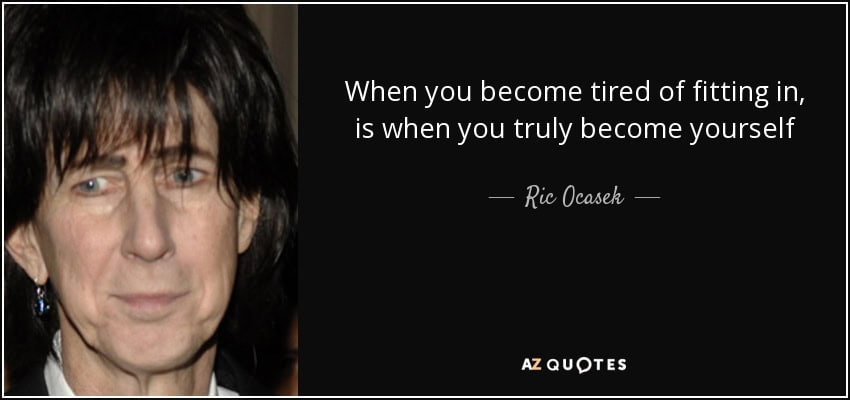New Monday #17
Happy Monday!
Ok, imagine it's this time of year back in 1978, and you hear this song for the first time at a high school dance:
https://www.youtube.com/watch?v=7BDBzgHXf64
Chunky guitars, keyboard noises, a strange vocal, huge toms, drums and bass... and a chorus sung by the band overdubbed more than 50 times.
Welcome to New Wave, kids! The Cars set the scene and the sound with their debut album, "The Cars."
The Cars
This is easily one of the best debuts from any band ever. It’s a killer combination of great songs played by excellent musicians, sung by distinctive singers, and assembled by a master producer, Roy Thomas Baker. It also helps that it was recorded at AIR Studios London, which in 1978 was THE state of the art.
The Cars were a perfect blend of elements and musicians. The quirky songs and vocals were provided by Rik Ocasik, who was also a master of those clicky guitar parts all over The Cars’ records. Ocasik created happy pop tunes that were somehow depressing and world-weary. There’s always a sense of "We’re in love, but I know you’ll leave me. Or die. Sigh."
The other lead singer of the group was Ben Orr, who had a terrific voice albeit not as distinctive as Ocasik’s. He was also a very musical bassist and had movie star looks, which was an interesting contrast to the skinny, angular 6’4” Ocasik.
Guitarist Elliot Easton... a monster player. He’s the guy throwing country, jazz and Beatles licks all over the place, and intertwining guitar lines with Gregg Hawkes' keyboard parts. Often you can’t tell which is a guitar and which is a synth. Hawkes invented a lot of the musical vocabulary of New Wave, pioneering using sequencers and synths in the studio and live.
Drummer Dave Robinson was The Cars' secret weapon. He is relentlessly solid with excellent timekeeping abilities and a killer sense of style: Robinson had a design background, and gave the band their signature look and album covers (although he didn’t design the cover of the debut record).
The Cars debut was pop, but it was rock, it had prog elements, it was serious, it was silly, and there’s not a bad song on it.
If you’ve not heard The Cars in its entirety, take 35 minutes and listen to it. Tons to learn and steal.
But if you’re busy, just take 8 minutes and listen to this excellent Rick Beato clip in which he breaks down a Cars’ hit off the album and explains it all to ya.
Roy Thomas Baker
If you don’t know the name, you know the acts he’s produced: Queen (yes, he did Bohemian Rhapsody), Foreigner, Cheap Trick, Devo, Ozzy Osbourne, Mötley Crüe, Journey, Alice Cooper, The Stranglers, The Smashing Pumpkins, The Darkness... hell of a long, and wide, career.
This is an excellent interview with the man. He talks songs, bands, recording technique, and he paints a vivid picture of big studio recording in its heyday.
Stephens 40-track 2-inch
John Stephens made tape decks and other audio gear. He started out by modifying 3M multitracks, and ended up designing his own electronics, tape heads, and a terrific drive system that minimized wear and tear on the tape.
Most of you don’t remember a time when playing the tape wore it out, starting with high-end loss. Stephens built decks to minimize this as well as improve response characteristics. His company made portable multitracks for on-location use during film shoots, and studio decks with different track configurations including 24, 32 and a whopping 40 tracks on a single 2-inch roll of tape. 'The Cars" was tracked on a Stephens 40.
Stephens decks were basically hand-made by the man himself and his small staff, and they were out of business by the 80s, when the industry standardized on 24-track 2-inch. Stephens decks are considered as good if not better than vintage Studer multitracks.
Here’s a bunch of things on Stephens and his tapedecks, for all of the knobheads like me and Dan!
A Tip, an Idea, a Thing to Try
We’ve heard from a bunch of you about last week’s tip from Dan, which was to try adding another iteration of the same plug-in and see what you get.
Here’s another idea. It works well with most of our plug-ins, and depending on how a plug-in is designed, it might work on some plug-ins from other companies.
Try overloading the input stage of the plug-in and see what you get. On most Korneff plug-ins, like the AIP, the PSC, if you turn up the INPUT TRIM, you’ll overload the input gain stage of the plug-in and you’ll get saturation and additional harmonics, similar would happen if you overloaded the input stage of a piece of analog equipment. This is because our plug-ins have a modeled analog circuit that includes an input gain stage. Not a lot of plug-ins are designed this way.
When you overload the input stage of a piece of equipment (or a plug-in with an input stage), you affect the character and the operation of everything happening after that. Overloading creates saturation, which adds some dynamic range compression (think compression with an instantaneous attack and release) as well as additional harmonic distortion, which might warm things up and/or add some brightness. Much of the sound of classic analog recordings is subtle overloading of channels and tape, all happening before any additional EQ or compression.
Remember that whenever you deliberately overload things to lower your monitor volume a bit—you don’t want digital clipping going through your speakers at high volumes or into your ears.
If you’re enjoying New Monday, can you do us a favor? Forward this to a friend who might be interested?
And of course, if you write to us we will answer you.
Rock on!
The Guys at Korneff


